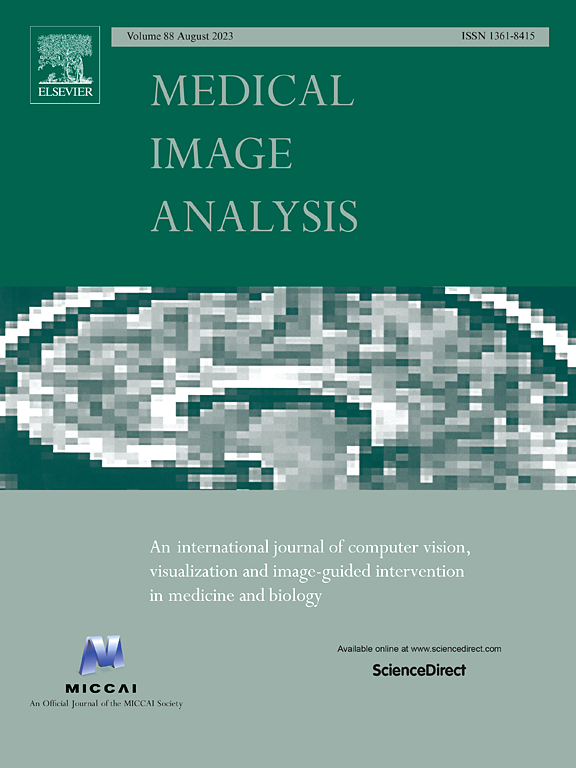Hyperfusion: A hypernetwork approach to multimodal integration of tabular and medical imaging data for predictive modeling
IF 10.7
1区 医学
Q1 COMPUTER SCIENCE, ARTIFICIAL INTELLIGENCE
引用次数: 0
Abstract
The integration of diverse clinical modalities such as medical imaging and the tabular data extracted from patients’ Electronic Health Records (EHRs) is a crucial aspect of modern healthcare. Integrative analysis of multiple sources can provide a comprehensive understanding of the clinical condition of a patient, improving diagnosis and treatment decision. Deep Neural Networks (DNNs) consistently demonstrate outstanding performance in a wide range of multimodal tasks in the medical domain. However, the complex endeavor of effectively merging medical imaging with clinical, demographic and genetic information represented as numerical tabular data remains a highly active and ongoing research pursuit. We present a novel framework based on hypernetworks to fuse clinical imaging and tabular data by conditioning the image processing on the EHR’s values and measurements. This approach aims to leverage the complementary information present in these modalities to enhance the accuracy of various medical applications. We demonstrate the strength and generality of our method on two different brain Magnetic Resonance Imaging (MRI) analysis tasks, namely, brain age prediction conditioned by subject’s sex and multi-class Alzheimer’s Disease (AD) classification conditioned by tabular data. We show that our framework outperforms both single-modality models and state-of-the-art MRI tabular data fusion methods. A link to our code can be found at https://github.com/daniel4725/HyperFusion.

Hyperfusion:一种用于预测建模的表格和医学影像数据多模式整合的超网络方法
整合各种临床模式,如医学成像和从患者电子健康记录(EHRs)中提取的表格数据是现代医疗保健的一个重要方面。多种来源的综合分析可以提供对患者临床状况的全面了解,提高诊断和治疗决策。深度神经网络(dnn)在医学领域广泛的多模态任务中始终表现出出色的性能。然而,将医学影像与临床、人口统计和遗传信息有效地合并为数字表格数据的复杂努力仍然是一个高度活跃和正在进行的研究追求。我们提出了一个基于超网络的新框架,通过对EHR值和测量值的图像处理来融合临床成像和表格数据。这种方法旨在利用这些模式中存在的补充信息来提高各种医疗应用的准确性。我们在两种不同的脑磁共振成像(MRI)分析任务上证明了我们的方法的强度和普遍性,即以受试者性别为条件的脑年龄预测和以表格数据为条件的多类别阿尔茨海默病(AD)分类。我们表明,我们的框架优于单模态模型和最先进的MRI表格数据融合方法。我们的代码链接可以在https://github.com/daniel4725/HyperFusion上找到。
本文章由计算机程序翻译,如有差异,请以英文原文为准。
求助全文
约1分钟内获得全文
求助全文
来源期刊

Medical image analysis
工程技术-工程:生物医学
CiteScore
22.10
自引率
6.40%
发文量
309
审稿时长
6.6 months
期刊介绍:
Medical Image Analysis serves as a platform for sharing new research findings in the realm of medical and biological image analysis, with a focus on applications of computer vision, virtual reality, and robotics to biomedical imaging challenges. The journal prioritizes the publication of high-quality, original papers contributing to the fundamental science of processing, analyzing, and utilizing medical and biological images. It welcomes approaches utilizing biomedical image datasets across all spatial scales, from molecular/cellular imaging to tissue/organ imaging.
 求助内容:
求助内容: 应助结果提醒方式:
应助结果提醒方式:


